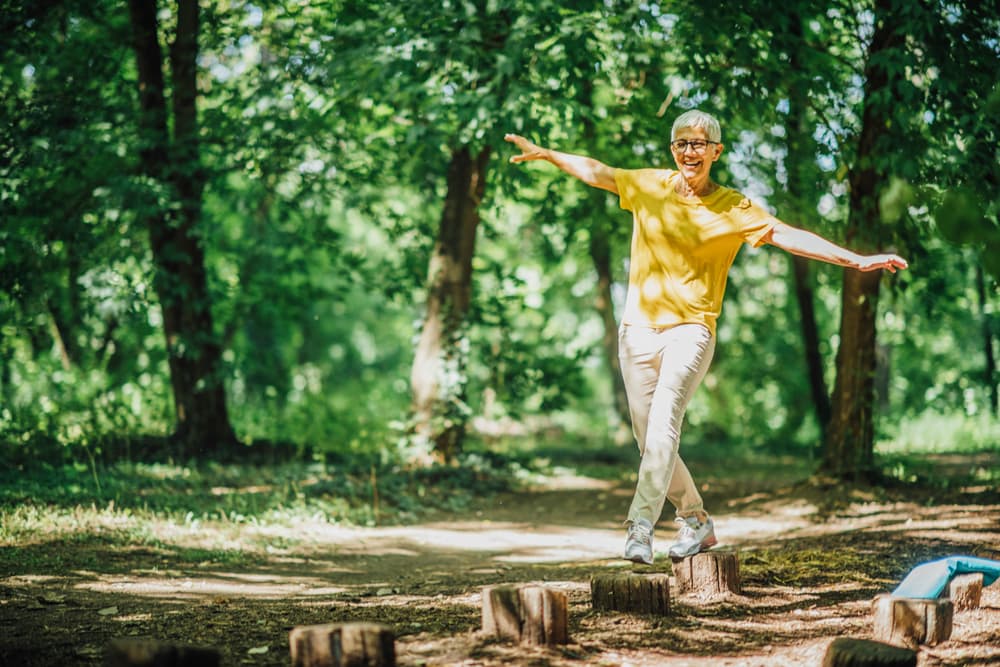How to Improve Balance with Physical Therapy
Balance is a state of equilibrium. For the human body it means even weight distribution and the ability to navigate an extremely dynamic environment. The balance system makes postural adjustments and orients you to gravity. It is a subconscious system. Most people don’t even notice the changes that occur in the balance system when you walk from steps to concrete to grass or catch yourselves on stumbling.
Balance is comprised of vision (sight), proprioception (stretch and pressure) and vestibular (inner ear) system. The integration of all 3 systems ensure you maintain your center of gravity and prevent falls. The Brain receives information from all 3 sources (input), sorts them out (integration) and develops a response (output). This response is transmitted to the joints and muscles that control your eyes, head, neck and legs to ensure you can keep moving safely. For Example: If you go on a hike, your movements are different when you are on a flat terrain compared to when you walk on a rocky ground. Take another example, see how guarded and slow you are when you get up from your bed in the dark vs. during daytime.
This system can be impacted at any level. At the level of input: poor eyesight, weak muscles or decreased sensation, from disorders like diabetes, can influence how much information the brain actually receives. Injuries to the brain, like Transient ischemic attack, stroke or trauma injuries can impact brains ability to sort through and integrate this information. Both these systems impact the output and your ability to prevent falls/injuries.
As you age, your muscles deteriorate, your reflexes are not as sharp as they used to be, muscles get tired quickly or there is an underlying injury that compounds it all. Compromised balance can make daily activities like getting out of bed in the middle of the night, being able to catch yourselves when you stumble or walking on uneven ground difficult and dangerous. Dizziness and vertigo along with unsteadiness can exacerbate instability. Ultimately, it can result in increased risk for falls, which, can lead to major complications.
My grandfather, unfortunately, had to undergo such an experience. He had been dealing with poor balance associated with aging. One day he tripped on the steps, fracturing his thigh bone (Femur). He needed hardware in his leg to stabilize the bone. The surgery, hospitalization and precautions against weight bearing resulted in further muscle weakness, swelling in legs and complications from a Deep vein thrombosis (DVT). In his case, after the surgery and its complications he had to use a walker to walk safely.
Just as you can condition and strengthen your muscles, you can also train and improve your balance. Physical Therapy has been shown to stop and improve deteriorating balance in all ages. Keep in mind, older adults are not the only one dealing with balance issues. Athletes can have weak performance areas associated with limited balance. A musculoskeletal injury can also result in muscle weakness impacting balance.
There are a variety of exercises for the legs, trunk, eyes and vestibular system to challenge and strengthen the balance system. You can increase the complexity and difficulty by adding neck movements, closing your eyes or using unstable surfaces such as bosu ball or balance beams. Training on different surfaces like sand, pebble stones or grass, improves activation of the receptors in the feet, improving your balance. Typically, these exercises should be done in the presence of a trained professional, until they determine it’s safe to do it independently at home. Best of it all, you don’t need any equipment.
Below are some simple equipment free exercises you can do at home to improve your balance.
1. Single leg stance
- Standing straight, lift one leg from the ground by bending your knee and hip
- Hold this position for 30 seconds’
- Repeat with the opposite side
- Repeat 3 times
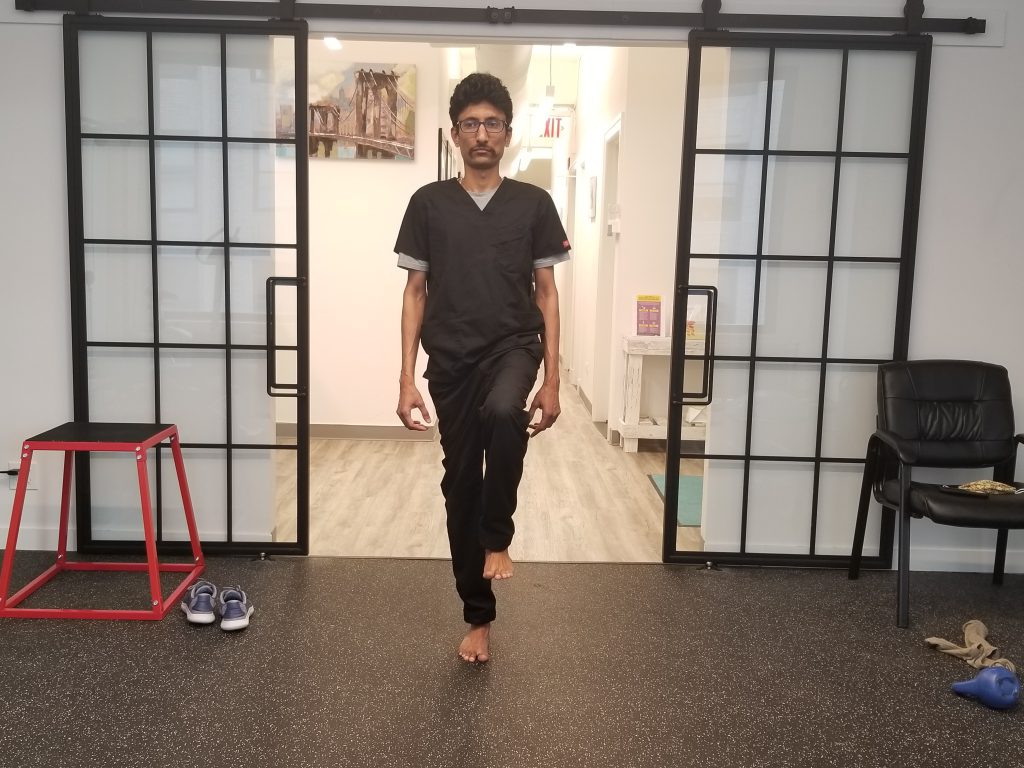
2. Single leg stance with eyes closed
- Standing straight, lift one leg from the ground by bending your knee and hip
- Close your eyes
- Hold this position for 30 seconds
- Repeat with the opposite side
- Repeat 3 times.
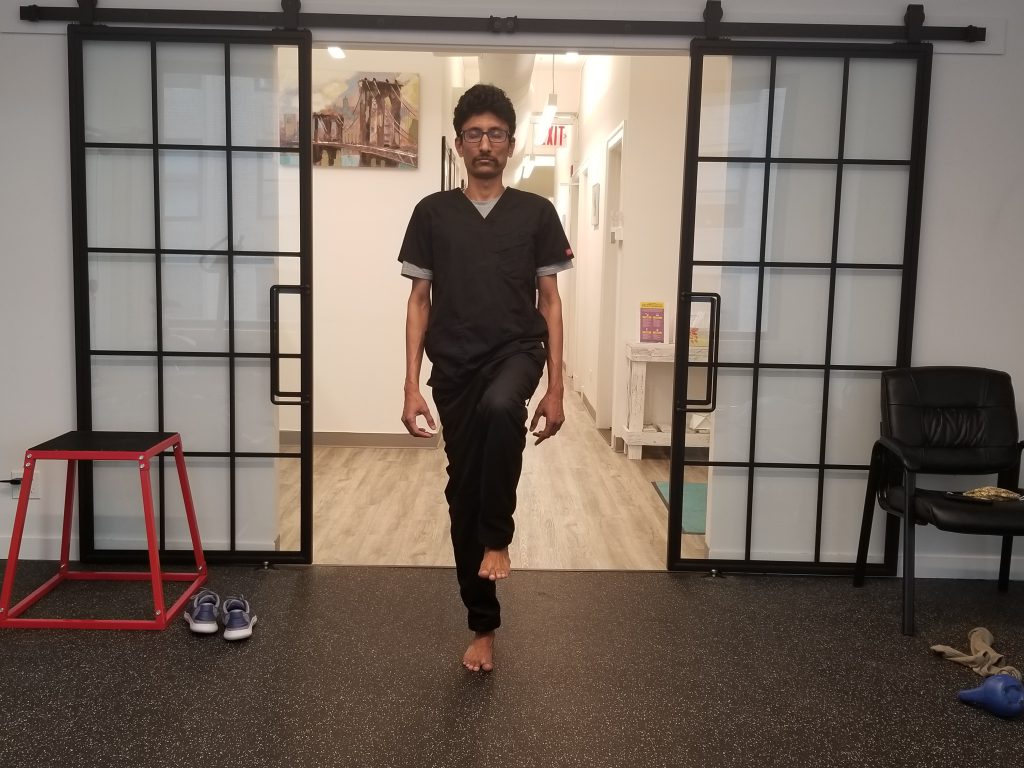
3. Single leg stance with eyes open and movements of extremities
- Standing straight, lift one leg from the ground by bending your knee and hip
- Lift both arms up as high as you can and lower them down.
- You can also lift one arm up at a time
- Repeat 30 times
4. Modified Tandem
- Stand with one foot in front of the other with the heel touching the toes
- Hold this position for 30 seconds
- Repeat with opposite leg forward
- Repeat 3 times
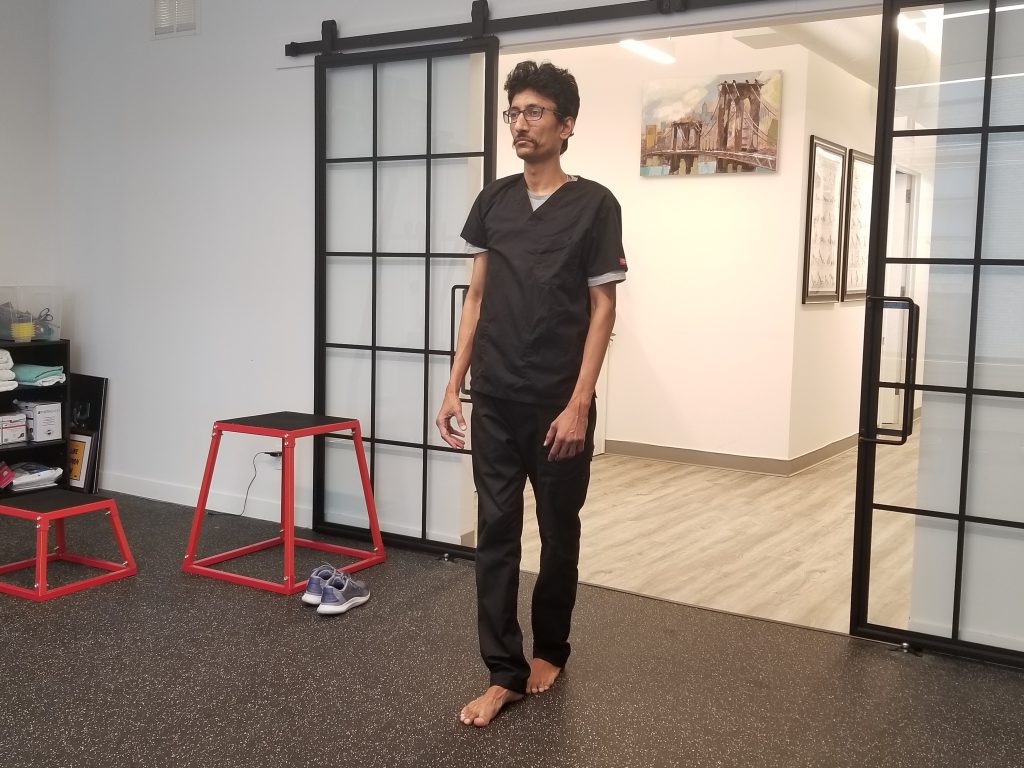
5. Modified Tandem Eyes Closed
- Stand with one foot in front of the other with the heel touching the toes
- Close your eyes
- Hold this position for 30 seconds
- Repeat with the opposite leg forward
- Repeat 3 times
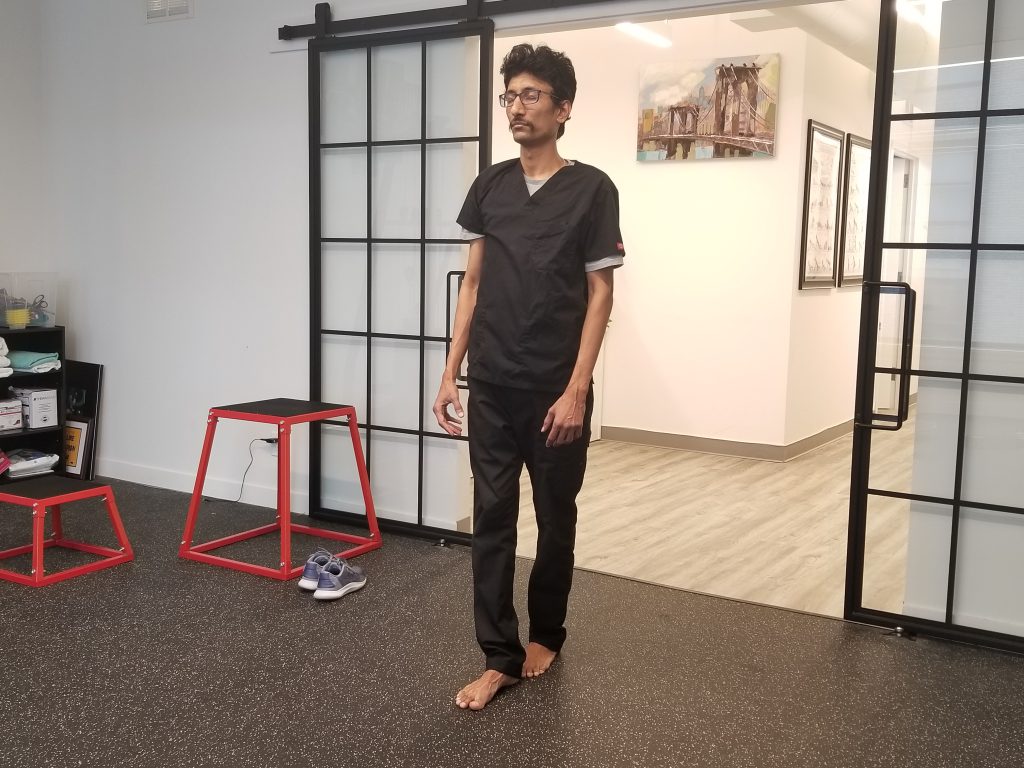
6. Modified Tandem Walks
- Pick an open area
- Start walking a line in a heel to toe pattern
- Repeat 1-2 laps
- You may need to look down initially, but once you get comfortable, start looking straight ahead.
7. Single leg Hopping
- Standing on one foot, do small forward hops on the stance leg
- Repeat 1-2 laps
Have more Questions? Want more information? Want to find out which areas of balance you need to work on? Call us on 212-706-7480 for a personalized evaluation and treatment.

